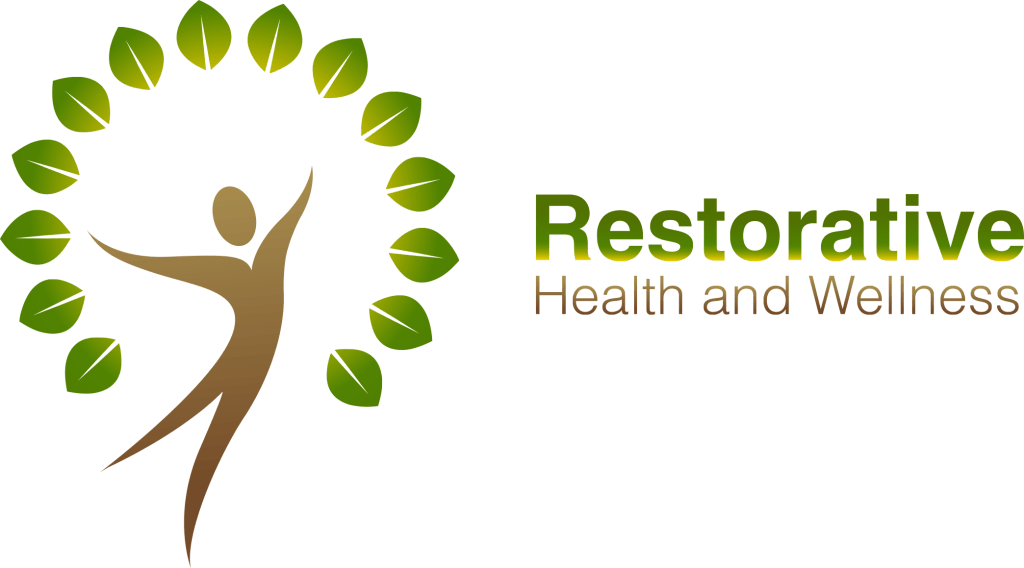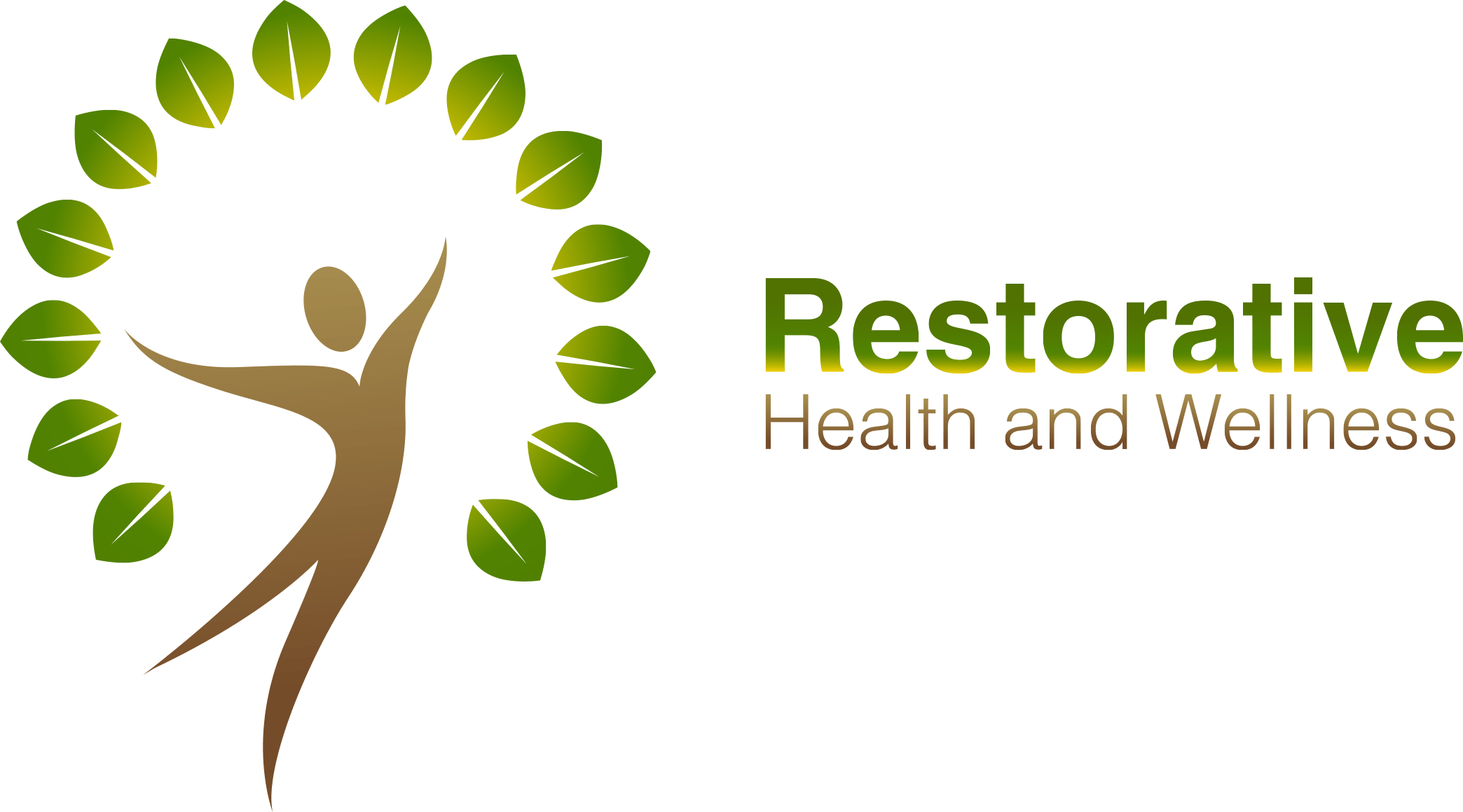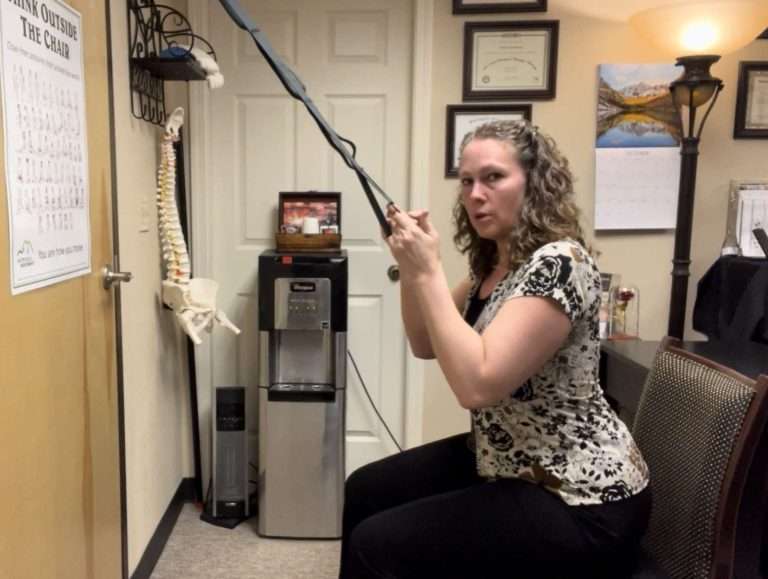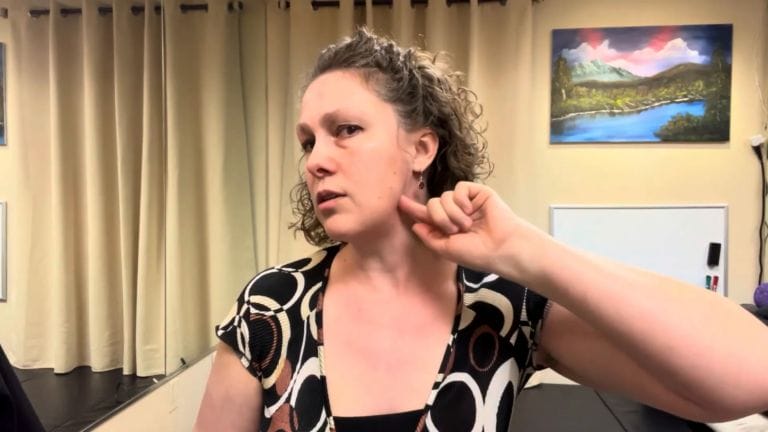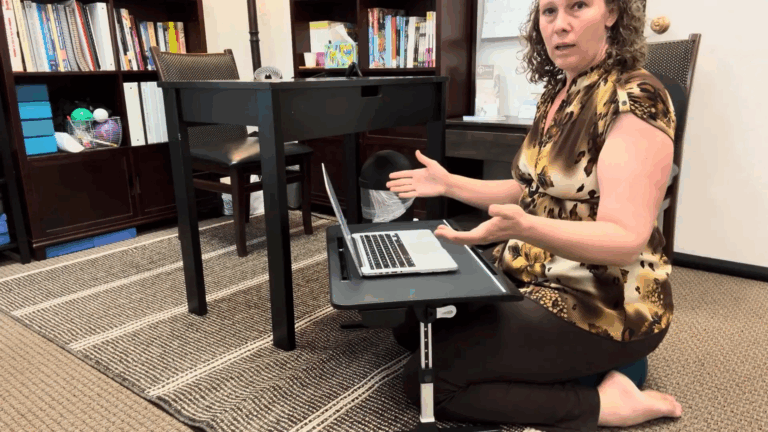Intercostal breathing: a simple strap-assisted tutorial to free your rib cage

Hi, I’m Emily Boudwin, a neuromuscular massage therapist and restorative exercise specialist. In this practical tutorial I walk you through Intercostal breathing using a simple strap so you can feel, retrain, and free the muscles between your ribs. If you’ve ever felt tightness, pain, or exhaustion in your rib cage while breathing, these steps will help you rediscover efficient, lower-torso breathing and give you tools to self-massage and monitor progress at home.

Why Intercostal breathing matters
The intercostals are the muscles that live in the spaces between your ribs. They assist with expanding and contracting your rib cage every time you breathe. Efficient Intercostal breathing means that the rib cage expands and contracts, allowing air to move in and out without recruiting unnecessary neck or shoulder muscles.
Poor or inefficient breathing patterns can leave the intercostal muscles overworked, tight, or painful. When your ribs habitually ride up into the top of the chest while you breathe, your neck and accessory breathing muscles take over. Over time that compensation can contribute to neck pain, headaches, tension, and a feeling of breathlessness during everyday tasks.
My personal experience—and why I teach this
About 15 years ago I had an experience that changed how I think about breathing. I was choking on a piece of steak and couldn’t get a breath. My ribs were so expanded and exhausted from trying to inhale that they hurt intensely. I couldn’t do my normal massage work for more than a week. I couldn’t tolerate a bra or any pressure on my rib cage for a month because those intercostal muscles were worn out from expanding and straining for air.

That episode taught me two things: first, how deeply the intercostals matter for everyday comfort; and second, that you can both treat and retrain these muscles with straightforward, patient work at home. In this tutorial I show the strap technique I use with clients and how you can use it to improve your own Intercostal breathing.
What you’ll need
- A strap that will wrap around your waist comfortably (belt, yoga strap, or a long scarf will work).
- A mirror or a quiet space where you can place a hand on your ribs and pay attention.
- A few minutes of quiet—start with 3–5 minutes and build from there.
Step-by-step: Strap-assisted Intercostal breathing
Use this guided sequence the way I do with clients. It helps you see and feel whether your rib cage is doing the expansion and contraction work it should be doing during breathing.
- Position the strap: Wrap the strap around your waist so it sits around the ribs, just below your sternum. It should be snug but not tight—just enough to notice movement of the strap as you breathe.
- Breathe in and out slowly: Take slow, gentle inhalations into the lower ribs and torso. Let the strap tell you whether the rib cage is expanding and contracting. If the strap moves outward on inhalation and inward on exhalation, your rib cage is working as intended.
- Aim for lower-torso breathing: Keep the top of your chest relaxed. You do not want the top ribs or shoulders to hike up toward your ears—this brings neck muscles into the pattern and defeats the purpose.
- Use your hands: If you’re unsure, put your hands on the sides of your ribs. Feel for outward expansion at the lower ribs rather than upward movement of the collarbones.
- Practice consistently: Do this for a few minutes, two to three times per day to begin retraining the movement patterns of your intercostal muscles.

What the strap tells you
The strap acts as a simple biofeedback tool. If it expands properly on the inhale and relaxes on the exhale, your rib cage is moving. If the strap barely moves or you notice the top of your chest lifting instead, the intercostals and lower torso are not doing their job. That’s the cue to slow down and focus the breath lower into your ribs and belly.

Self-massage for the intercostals: hands-on care
There is such a thing as intercostal massage—techniques that target the muscles between the ribs. I use these techniques in clinic, and you can do gentle versions at home. Take time and work in between each of your ribs, both along the front and the sides of your thorax.
Tips for safe self-massage between the ribs:
- Use light to moderate pressure. The tissues here are thin and the ribs are close by—avoid pressing so hard that it causes sharp pain.
- Work slowly. Move between ribs, pausing on tender spots for 10–20 seconds while breathing slowly.
- Avoid doing aggressive work directly over the sternum or where you feel sharp, radiating pain—if pain is sharp or unusual, stop and consult a professional.
- Combine massage with the strap exercise: gently massage and then use the strap to see if breathing improves immediately after.
Common mistakes and how to fix them
“You do not want your ribs up top on the top of your chest to go up in the air because then you’re working on getting your neck muscles and all of that involved.” — Emily Boudwin
That simple line sums up the most common error. Many people breathe high into the chest, lifting the upper ribs and neck. This recruits accessory muscles (sternocleidomastoid, scalenes, upper trapezius) and leads to neck tension and headaches over time.
How to correct:
- Slow your breaths: long, gentle inhales and exhales give you time to direct the air toward the lower ribs.
- Place a hand on your abdomen and another on your lower ribs to guide where the movement should happen.
- Use the strap to make the movement obvious—if the strap moves, you’re doing the right thing.
How often and how long?
Start with short sessions. Five minutes twice daily is enough to create awareness. As you gain control, you can extend sessions to 10 minutes or include intercostal breathing as part of your warm-up before exercise or as a daily relaxation practice. The goal isn’t to overtrain the intercostals but to restore balanced, efficient breathing.
When to seek professional help
If you experience persistent chest pain, sharp pain between ribs, dizziness, unexplained shortness of breath, or pain that doesn’t improve with gentle care, see a healthcare provider. My experience with rib pain following a choking episode highlighted how painful and sensitive these muscles can become when strained. If self-care doesn’t help, professional neuromuscular massage, medical evaluation, and guided rehabilitation can make a significant difference.
Related resources from my practice
If you’re interested in continued work on breathing, neck tension, headaches, or individualized care, here are some helpful resources on the Restorative Health and Wellness site:
• Our routines are on autopilot — breathing, posture, and movement patterns: https://restorativehealthandwellness.com/our-routines-are-on-autopilot/
• Suboccipital self massage guide — useful when neck muscles and breathing patterns are linked: https://restorativehealthandwellness.com/suboccipital_self_massage_guide/
• Understanding suboccipital headache causes & solutions — when neck and breathing tensions produce headaches: https://restorativehealthandwellness.com/understanding_suboccipital_headache_causes_solutions/
• Headache massage and SCM self massage — techniques for headache relief that often complement breathing work: https://restorativehealthandwellness.com/headache-self-massage-scm-sternocleidomastoid/
• Schedule a medical massage or learn more about neuromuscular therapy: https://restorativehealthandwellness.com/contact-us-and-schedule-your-massage/ and https://restorativehealthandwellness.com/about-neuromuscular-massage-therapist/
Quick checklist to use every day
- Wrap a strap around the lower ribs for 1–5 minutes and check expansion.
- Place your hands on the ribs; breathe slowly into the sides and lower belly.
- Avoid lifting the top ribs and shoulders—keep neck soft.
- Perform gentle intercostal self-massage only if it feels comfortable.
- Keep a daily log for two weeks: note ease of breathing, rib tenderness, neck tension, and any changes.
Final thoughts
Intercostal breathing is simple, underappreciated, and powerful. With just a strap, a few mindful minutes, and gentle self-massage, you can begin to restore efficient rib movement and reduce the unnecessary tension that so many of us carry. Be patient—these patterns developed over a long time and will take consistent, gentle practice to change.
If you want personalized guidance, feel free to explore the resources linked above or contact me for an assessment. Remember: small, regular changes in how you breathe can ripple into big improvements in comfort and function.
Did this post help you! |
|
Then sign up for our FREE Email Newsletter! |
| Sign Me Up! |
